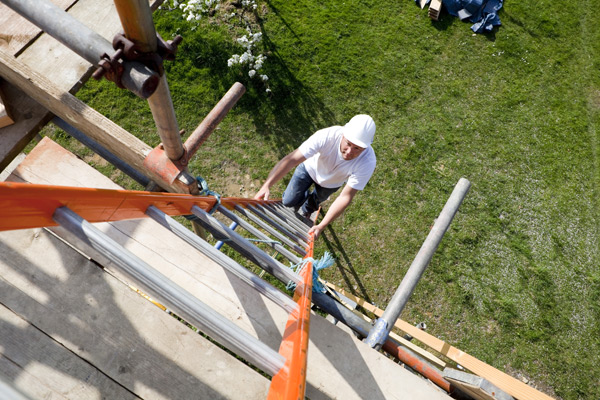2018 News
Every Ladder Accident is Preventable

In the United States, more than 300 people die annually due to ladder-related accidents and thousands more suffer from sprains and strains, broken bones and serious debilitating conditions. In the construction industry, ladder fall injuries (LFIs) represent approximately 81% of all fall-related injuries treated in emergency rooms.
Beyond the financial and quality-of-life costs to individuals and their families, LFI-related healthcare costs top $4.6 billion, and increased absenteeism, worker replacement and productivity loss can cost businesses up to twice as much.
5 tips to prevent ladder falls
OSHA, the American Ladder Institute and other health-related organizations offer important tips to safe ladder usage. In summary, these include:
- Choose the right ladder for the job. Using the incorrect ladder is a leading cause of ladder accidents, so be sure to read and follow all labels/markings on the ladder.
- Do not exceed the maximum load rating of a ladder, including the weight of any tools or equipment.
- Even though a short ladder weighs less and is easier to carry, if it’s too short people will be tempted to stand on the top step/rung, which is dangerous.
- Use the correct style of ladder based on the work you’re doing (stepladder, extension or staircase). Never use a step ladder as a single ladder or in a partially closed position.
- If you’re working anywhere near electricity, use a non-conductive fiberglass ladder.
- Never use ladders that have … worn or damaged rubber feet; cracked, bent or split side rails; bent, broken or slippery rungs or steps; or loose or worn latches, locks, rivets, bolts or ropes.
- Properly set up ladder. Use only on a stable, level, dry surface, and secure the ladder at the top and/or bottom. Make sure all support brackets and latches are locked. Never place a ladder on top of boxes or bases to gain height. If you’re working in front of a door that opens toward you, be sure to block the door off and alert others with a sign posted on the other side.
- Climb using the three-point rule. Always maintain three points of contact: two hands and a foot, or two feet and a hand. Keep your body near the middle of the step and always face the ladder. (If you can’t reach something with the center of your body between the side rails of the ladder, climb down, move the ladder and climb back up!) Wear clean, slip-resistant shoes.
- Do not … move or shift a ladder while a person or equipment is on the ladder, use ladders in windy or stormy conditions, or allow more than one person on a ladder at a time!
How to set up extension or straight ladders
Be sure the top of the ladder extends at least 3 feet above the point of support and is at the proper angle (place the base a quarter of the working length of the ladder from the wall or other vertical surface, according to OSHA’s diagram). Be sure that all locks on an extension ladder are properly engaged.
About Baker Group
Founded in 1963 and with 650 employees across Iowa, Baker Group is the Midwest’s premier full-service specialty contractor providing mechanical, sheet metal, electrical, compressed air, building automation, process automation, security systems, fire alarm systems, parking/revenue controls and 24/7/365 service. For more information, call 855.262.4000 or visit https://www.thebakergroup.com/.

